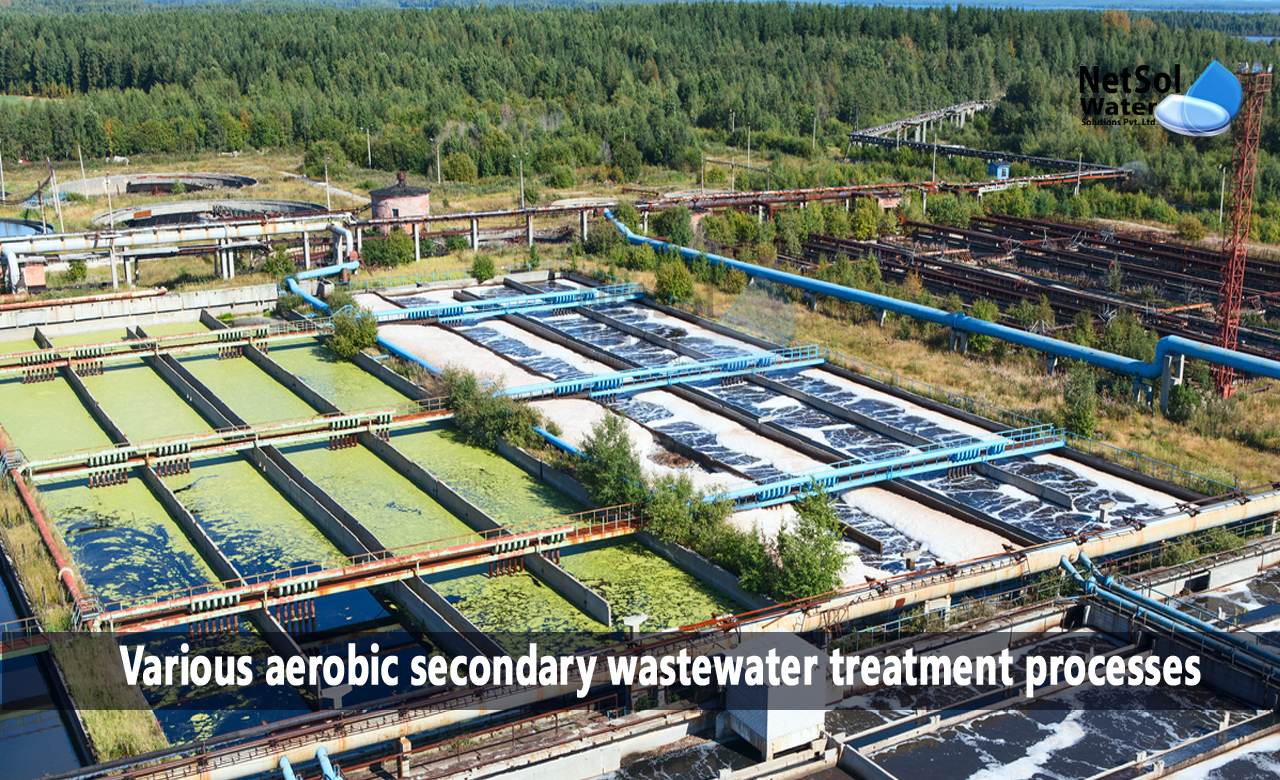How many aerobic secondary wastewater treatment processes?
Aerobic wastewater treatment systems purify water by utilizing bacteria, protozoa, and other specialized microorganisms, which feed on oxygen as opposed to anaerobic systems that do not need oxygen.
These systems utilize the microbial decomposition process which naturally occurs, and breaks down pollutants in industrial effluent and enables their removal.
Let’s discuss the various aerobic secondary wastewater treatment processes in this blog.
1: Activated Sludge Process
Municipal applications frequently use activated sludge procedures, which take place when wastewaters from the first stage of treatment, enter an aeration tank. In the presence of suspended (freely floating) aerobic bacteria, the organic material is broken down and consumed following aeration, resulting in biological solids that flocculate into larger clumps, or flocs.
The wastewater's suspended flocs are sedimented out in a settling tank. While, excess solids are dumped as sludge, recycling settled sediments to the aeration tank maintains suspended solids levels.
2: Fixed Bed Bioreactors
These systems consist of multi-chambered tanks with porous ceramic, porous foam, or porous plastic media firmly packed inside. The immobilized media bed is subsequently used to process the wastewater.
The medium's wide surface area is intended to encourage the development of a strong biofilm with the lifespan of a long solid, reducing sludge formation and lowering the cost of sludge disposal.
The effluent will be able to flow through the system without clogging or channelling, in a well-designed fixed-bed bioreactor. Chambers can be aerobic while also having anoxic zones, allowing for simultaneous aerobic carbonaceous removal and full anoxic denitrification. These systems can support more complex biological processes, including as nitrification, denitrification, desalination, sulfide-reduction, and anammox.
3: MBBRs (Moving bed bioreactors)
The majority of MBBRs consist of aeration tanks containing moving polyethylene biofilm carriers, which are held in place by media retention sieves inside the vessel.
Today, a wide number of vendors offer plastic biofilm carriers in a variety of sizes and shapes. They are typically cubes or cylinders with a diameter of half an inch to an inch, and are designed to be suspended with their immobilized biofilm throughout the bioreactor, by mechanical mixing or aeration.
Due to the moving bio-film carriers that are suspended, MBBRs enable the treatment of high BOD wastewaters in a smaller space without any blockages. Nevertheless, no sludge is recycled back into the process; instead, excess sludge settles and is removed as slurry by vacuum truck, or settled solids are filter pressed and disposed of as solid waste.
4: MBRs (membrane bioreactors)
MBRs are complex biological wastewater treatment systems that filter and reuse, suspended solids from conventional suspended growth-activated sludge, using membrane filtration rather than sedimentation.
BOD and total suspended solids are the two main factors that MBRs consider. A typical MBR may contain aerobic treatment tanks, an aeration system, mixers, a membrane tank, a clean-in-place system, and either a hollow fiber or flat sheet ultrafiltration membrane. The design of an MBR system depends on the kind of wastewater and the treatment objectives.
5: Biological Trickling Filters
In order for these filters to work, air or water must be passed through a medium that is designed to collect biofilm on its surfaces. The biofilm can be created by aerobic and anaerobic bacteria, which degrade organic contaminants in water.
Some of the media used in these systems include gravel, sand, foam, and ceramic materials. This approach can be used in a wide range of settings where odour control is important, although, it is most frequently used in municipal wastewater treatment and air remediation, to eliminate H2S at municipal sewage treatment plants.
Manufacturer of wastewater treatment plants
Netsol Water is the leading manufacturer of water treatment and sewage treatment systems in India. We offer water softeners, wastewater treatment facilities, including those that use aerobic wastewater treatment techniques, sewage treatment facilities, water treatment facilities, RO plants, and effluent treatment facilities for use in a variety of industries.
The most difficult water treatment or wastewater treatment requirements of a wide range of clients, including small businesses, companies, and regional government agencies, are handled by Netsol by combining cutting-edge technology with years of experience.
For further information, contact us at +91 9650608473 or email at enquiry@netsolwater.com



